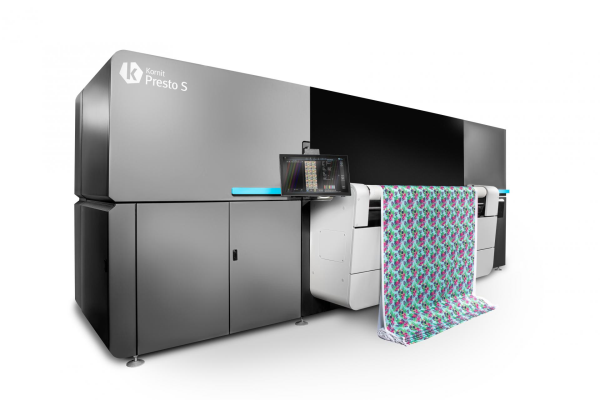Blur, a Portuguese company specialising in textile printing and embroidery, has installed a Kornit Presto S with softener solution.
The company, which produces work for high fashion brands, already operates multiple Kornit Atlas and Avalanche systems for industrial-scale digital direct-to-garment production. The Presto S, meanwhile, will allow it to offer sustainable, single-step direct-to-fabric production of multiple fabrics in any quantity.
Blur provides rapid fulfillment of orders ranging from a single piece to mass production, with an average order of about 500 items. It says that since the Kornit Presto S arrived, the system has been in operation day and night, producing samples during normal business hours and fulfilling diverse incoming orders overnight.
Mariano Dias, CEO at Blur, commented on the new machine. ‘The quality is just outstanding, and some clients only want to print with Kornit technology. We are extremely happy with Kornit’s collaboration, and our printers are working perfectly around the clock. Any textile printing company looking to move into fashion and work with famous brands will need both roll-to-roll and DTG capabilities. Our recommendation for success is to buy the Kornit Atlas and Kornit Presto printers.’
The CEO went on to add that, with demand increasing for sustainably-produced textiles, Blur is also considering investing in a second Kornit Presto S.
Chris Govier, Kornit’s EMEA president, added, ‘As with many of our customers, Blur was built around more traditional textile operations—in their case embroidery—before discovering the vast potential for growth and versatility offered by quick, efficient, digital production on demand.
‘Whether you’re serving an internationally-known fashion house looking for more agile fulfillment and simpler supply chains, or the independent creator hoping to bring unique inspirations to life, Kornit’s product portfolio offers continuous opportunities to answer market needs, create new markets, and scale upwards under any conditions.’

